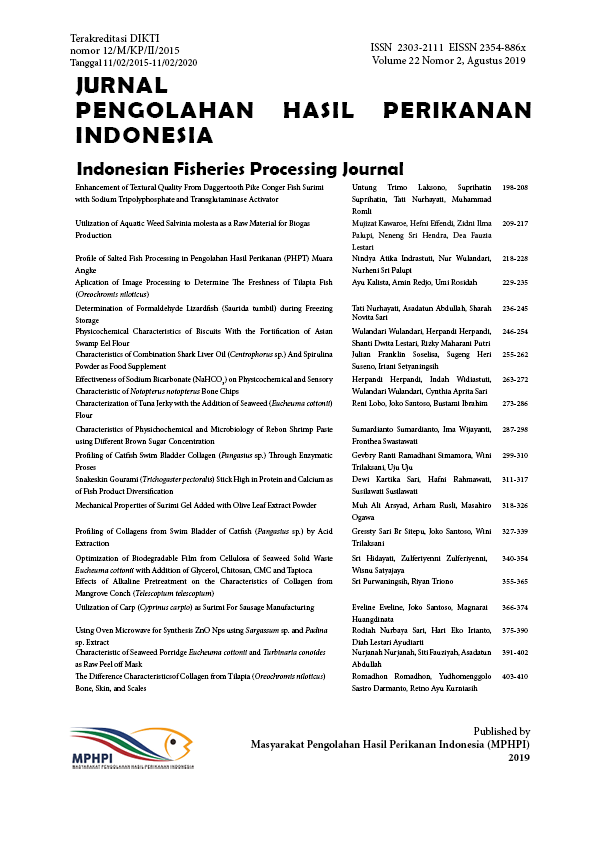Utilization of Carp (Cyprinus carpio) as Surimi For Sausage Manufacturing
Abstract
Carp (Cyprinus carpio) is a freshwater fish with high economic value and good farming potential. Carp-based product diversification could be done by using it as food ingredients such as surimi in sausage manufacture. This research was aimed to evaluate sausage produced from carp surimi by varying washing frequency and tapioca filler concentration. Five washing frequencies (1; 2; 3; and 4 times) and three tapioca filler concentrations (2; 3; and 4%) were compared. The study showed 1 time washing frequency gave better surimi physical characteristics (57.40% yield; 73.76% water holding capacity; 26.64% expressible moisture content, 821.92 g.cm gel strength; 54.45% whiteness) and chemical characteristic (78.00% moisture content and 6.34% salt soluble protein) compared to other washing frequencies. Based on the organoleptic test, 2% tapioca was the selected filler concentration. Selected surimi sausage had better physical, chemical and sensori characteristics than commercial sausage. The physical characteristics of the selected sausage were 70.46% water holding capacity; 24.58% expressible moisture content; 78.64% whiteness; 4346.70 g.cm gel strength; 101.23 g hardness; 0.98 g springiness; and 43.96 g chewiness. While the chemical characteristics of that sausage were 75% water; 1.35% ash; 11.51% protein; 4.46% fat; and 7.63% carbohydrate. The sensory scores of the sausage evaluated were color 0.44, aroma 0.60; taste 1.16; and springiness 1.86.
Authors

This work is licensed under a Creative Commons Attribution 4.0 International License.
Authors who publish with this journal agree to the following terms:
- Authors retain copyright and grant the journal right of first publication with the work simultaneously licensed under a Creative Commons Attribution License that allows others to share the work with an acknowledgement of the work's authorship and initial publication in this journal.
- Authors are able to enter into separate, additional contractual arrangements for the non-exclusive distribution of the journal's published version of the work (e.g., post it to an institutional repository or publish it in a book), with an acknowledgement of its initial publication in this journal.





